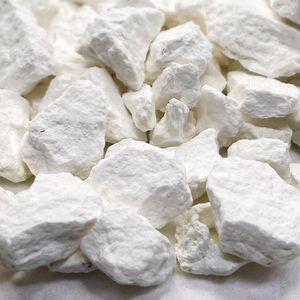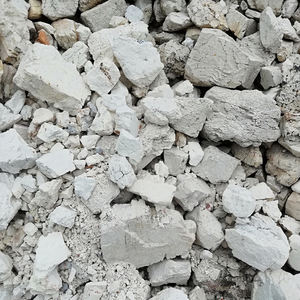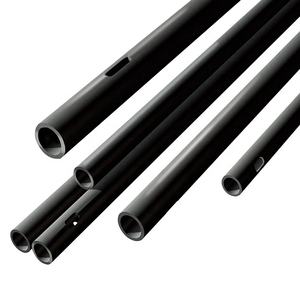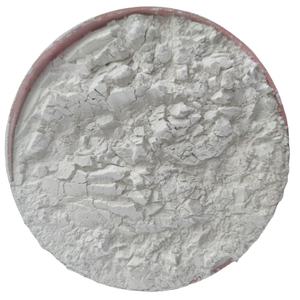Professional industry ceramic supplier, silicon nitride, silicon carbide, aluminum nitride and any other kinds of ceramics.
PRODUCT PARAMETERS
Description
Overview of Fire Resistant High Alumina Brick 1770℃ Refractory Alumina Bricks for Ceramic Industry Furnace
Fire Resistant High Alumina Brick 1770℃ Refractory Alumina Bricks for Ceramic Industry Furnace are non-metallic substances designed to withstand extreme temperatures exceeding 1,000°C, along with harsh chemical and physical stresses. They are essential for the inner linings of industrial furnaces, kilns, reactors, and incinerators, providing critical thermal insulation and structural integrity in processes ranging from metal and glass manufacturing to power generation.
Features of Fire Resistant High Alumina Brick 1770℃ Refractory Alumina Bricks for Ceramic Industry Furnace
-
High-Temperature Resistance: Maintain structural strength and stability at temperatures often exceeding 1500°C.
-
Excellent Thermal Shock Resistance: Withstand rapid heating and cooling cycles without cracking or spalling.
-
Chemical Inertness: Resist corrosion and degradation from slags, molten metals, and acidic or basic environments.
-
High Mechanical Strength: Possess considerable load-bearing capacity at operating temperatures.
-
Low Thermal Conductivity: Provide effective insulation to improve energy efficiency and protect furnace structures.
-
Abrasion Resistance: Withstand erosion from solid materials and gas flows.
Specification of Fire Resistant High Alumina Brick 1770℃ Refractory Alumina Bricks for Ceramic Industry Furnace
Here’s the product content for fire resistant high alumina bricks:
These bricks handle extreme heat. They withstand temperatures up to 1770°C. This makes them perfect for ceramic industry furnaces. High alumina content is key. They contain over 48% alumina. Often it’s much higher. This high alumina level gives excellent fire resistance. The bricks resist intense furnace heat. They won’t melt or deform easily. These are refractory alumina bricks. They provide strong thermal insulation. This keeps furnace heat inside efficiently. Energy costs go down.
The material structure is very dense. It minimizes porosity. Less porosity means less heat escapes. It also stops slag and chemicals penetrating. This protects the brick from damage. Furnace linings last longer. The bricks have high mechanical strength. They resist physical wear and tear. Heavy loads inside the kiln are no problem. Thermal shock resistance is another benefit. Sudden temperature changes happen. These bricks cope well. They avoid cracking.
Use them in critical furnace zones. Hot spots need reliable protection. Kiln linings benefit greatly. Saggars and setters use them too. Installation is straightforward. The bricks maintain their shape under stress. Consistent performance matters. They ensure stable furnace operation. Production quality improves. Downtime reduces. Maintenance costs decrease. You get a durable furnace lining solution. It saves money over time.
Applications of Fire Resistant High Alumina Brick 1770℃ Refractory Alumina Bricks for Ceramic Industry Furnace
Fire resistant high alumina bricks handle extreme heat in ceramic industry furnaces. They withstand temperatures reaching 1770℃. This makes them perfect for lining kilns and firing chambers. The bricks contain very high levels of alumina. This material gives them excellent resistance to heat. Ceramic production involves intense, prolonged firing cycles. These bricks maintain strength and shape under such conditions. They offer superb thermal stability. This prevents warping or cracking over time. Consistent furnace dimensions are crucial for quality ceramics. These bricks help achieve that.
Chemical attack is a major problem in ceramic kilns. Glazes, fluxes, and clay fumes can damage furnace linings. High alumina bricks resist these corrosive substances well. They endure contact with molten materials and aggressive vapors. This resistance significantly extends the furnace lining’s life. Fewer repairs are needed. Production downtime is reduced. Long-term operational costs go down.
Thermal shock resistance is another key benefit. Ceramic furnaces experience rapid heating and cooling cycles. The bricks cope well with these sudden temperature changes. They don’t spall or crack easily. This reliability ensures continuous operation. Furnace safety improves. The risk of catastrophic lining failure drops.
Structural integrity matters under heavy loads. These bricks possess high compressive strength. They support the furnace structure effectively. They resist wear and abrasion during loading and unloading. This durability translates to dependable performance. Operators trust these linings. Consistent product quality results from stable furnace conditions. Installation requires careful attention to mortar and jointing techniques. Proper installation maximizes the bricks’ performance.
Company Profile
Tanki New Materials Co.Ltd. focus on the research and development, production and sales of ceramic products, serving the electronics, ceramics, chemical and other industries. Since its establishment in 2015, the company has been committed to providing customers with the best products and services, and has become a leader in the industry through continuous technological innovation and strict quality management.
Our products includes but not limited to Aerogel, Aluminum Nitride, Aluminum Oxide, Boron Carbide, Boron Nitride, Ceramic Crucible, Ceramic Fiber, Quartz Product, Refractory Material, Silicon Carbide, Silicon Nitride, ect. please feel free to contact us.

Payment Methods
T/T, Western Union, Paypal, Credit Card etc.
Shipment Methods
By air, by sea, by express, as customers request.
5 FAQs of Fire Resistant High Alumina Brick 1770℃ Refractory Alumina Bricks for Ceramic Industry Furnace
Fire Resistant High Alumina Brick 1770℃ FAQs
What’s the highest temperature these bricks handle?
These bricks withstand temperatures up to 1770 degrees Celsius. That’s their safe working limit. Pushing them hotter risks damage. They are designed for extreme heat in furnaces.
Why choose high alumina bricks over fireclay bricks?
High alumina bricks contain more aluminum oxide. Fireclay bricks have less. This makes high alumina bricks much stronger against heat. They resist melting better. They handle tougher furnace conditions longer.
Where are these bricks used in ceramic furnaces?
You find them in the hottest furnace zones. Use them in the firing zone. Use them near the kiln car tops. Use them where the burner flames hit directly. They protect the furnace structure from intense heat.
How long do these bricks last?
Their lifespan depends on furnace conditions. Temperature cycles matter. Chemical exposure matters. How often the furnace starts and stops matters. Proper installation matters. Under normal conditions, expect reliable service for years. Harsher conditions shorten brick life.
Any special installation advice?
Follow the manufacturer’s instructions exactly. Cut bricks precisely. Fit them tightly together. Leave proper expansion joints. Pack expansion joints correctly. Use the right refractory mortar. Correct installation prevents early failure. It ensures the bricks perform well.
REQUEST A QUOTE
RELATED PRODUCTS

Refractory Heat Resistance High 95% 99% Porous Hollow Al2o3 Alumina Ceramic Tube/rod

High Performance Refractory Machined Parts White Round Shape Zirconium Oxide Ceramic Washer Zirconia Ceramic Ring

High-purity Boehmite Used As Coating Materials Abrasive Polishing Materials Battery Separators Ceramics Refractory Materials

Factory Refractory Large Diameter Alumina Ceramic Roller Ceramic Tube Pipe for Furnace Kiln

Refractory Silicon Carbide Sic Kiln Furniture Ceramic Plate for Ceramic High Temperature Furnace Daily Ceramic Porcelain



